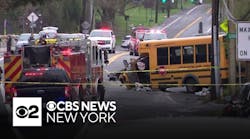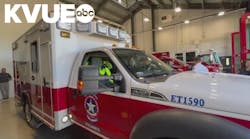May 28--Burning is often seen as a way to destroy evidence or dispose of a body, but authorities say that's just a myth.
In the past, successfully covering up a crime with fire was feasible but with today's advances in technology, evidence can always be found.
"It might take us a little longer because you have to sift through (fire damage), but we can still overcome it," said Richmond County sheriff's Lt. Calvin Chew.
The difficulty is ultimately determined by how quickly the fire is extinguished.
Fire, Chew said, is no more damaging to evidence in homicide cases than water or other elements.
Last week, the charred remains of three adults were found near Deer Chase Elementary when firefighters were called to put out a brush fire. The bodies have not been identified by the Richmond County Coroner's Office, but the sheriff's office has said it believes them to be former educators Roosevelt and Edna Jones and their son Russell.
Richmond County has seen its share of cases in which fire was used in an attempt to mask homicides, but in recent years the number has dropped.
Augusta Chronicle archives show that from 1997 to 2008 the county worked almost one homicide/arson case each year. At least five cases involved homicide victims in burning vehicles, with two in burning homes and two left out in the open.
The Augusta-Richmond County Fire Department's fire investigator Lt. Neal Brown said arsons are not always easy to identify, but his experience and evidence sometimes immediately point to arson.
"You can go in there and try to make it look like an electrical fire and I'll know it's not," Brown said.
Chew said the biggest problem in finding abandoned remains is no immediate direction to focus the investigation.
"When we found these bodies, we didn't know where to start," he said of last week's case. "Once we have an idea, we can start."
A Macon principal's call to deputies to check on his family gave investigators descriptions that matched the remains found last week.
Ballistics evidence led police to the couple's son Ryan Jones. Based on the evidence, police charged him with three counts of murder Thursday. Coroner Grover Tuten said his office was reviewing dental records.
"It's a hard process," he said of burn victims. "A lot of times we're 99.9 percent sure who they are, but until I get that dental confirmation, I can't say who it is."
Burned bodies are one of the most difficult to identify, Tuten said.
Medical examiners go through three stages of identification of a body: visual, photographic or documentary evidence and fingerprints.
He said fingerprints are the most commonly used practice outside of visual identification, and in most cases, fingerprints are still available on burned bodies.
"If we can't do any of the three, then we have to go back to dental," Tuten said. "The bad part is you're shooting in the dark. You have to have an idea who it is so you know what dentist to ask for records."
The last resort is DNA.
The most difficult body to identify is the one that has gone through stages of decomposition, especially in the warmer months.
Copyright 2013 - The Augusta Chronicle, Ga.





